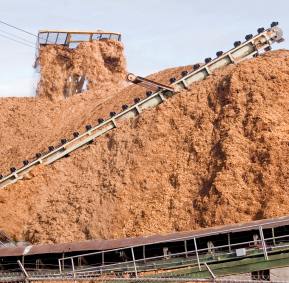|
Top 3 Stories from the November Issue
|
|
|
| INDUSTRY AT A GLANCE
From Forest2Market's Economic Outlook |
Last week, the Bureau of Economic Analysis revised 3Q2010 GDP upward to 2.5 percent. This follows a 3.7 percent increase in 1Q2010 and a 1.7 percent increase in 2Q2010. This 2.5 percent includes 1.3 percent in inventory building and 1.2 percent in actual sales of domestic products.
In October, performance in the Wood Products sector remained essentially static; the only reported change was an uptick in employment. The expansion in Paper Products, by contrast, encompassed production, employment and new export orders (see table). Neither class of manufacturers reported an increase in new domestic orders in the first month of the fourth quarter. |
 | HOUSING MARKET UPDATE | 
If slow and steady wins the recovery race, then the housing market has the slow part nailed. Unfortunately for the industry, the steady part needs some work. After a series of positive statistics in September, almost all housing numbers took a hammering in October. According to Charles Haldeman, Jr., chief executive of Freddie Mac, "We believe that it will be a considerable time until the housing market has a sustainable recovery."
While sales of both new and existing homes declined in October, pending home sales data indicates sales may pick up in the next month or two. According to the National Association of Realtors, the Pending Home Sales Index (PHSI) rose by 10.4 percent in October. (The PHSI is a leading indicator; sales generally will show similar growth 1-2 months later.) "It is welcoming to see a solid double-digit percentage gain, but activity needs to improve further to reach healthy, sustainable levels. The housing market clearly is in a recovery phase and will be uneven at times, but the improving job market and consequential boost to household formation will help the recovery process going into 2011," said Lawrence Yun, the association's chief economist.
|
 | PULPWOOD PRICES FELL IN 3Q2010 | 
Last winter, total fiber prices escalated due to a significant increase in the haul distance required to move adequate supply to mills in the U.S. South. Local supply in the West-South and Mid-South, constrained by wet weather that prohibited logging, had to be replaced with chip shipments from the East-South, the Lake States, and even as far away as Nova Scotia and Brazil.
Since the end of 1Q2010, however, weather has returned to normal conditions, and as a result, prices have reverted to historical averages (see chart). Hardwood fiber suffered the biggest losses, with prices dropping 13 percent in third quarter, from $49.50/ton to $43.08/ton. Pine fiber prices fell 4 percent, from $36.92/ton to $35.53/ton in the third quarter.
|
 | SAWMILLS REDUCE PRODUCTION AND SHED INVENTORY AT THE END OF 3Q2010 | 
Bracing themselves for a tough 4Q2010 and 1Q2011, sawmills in the South began cutting production and shipping from inventory at the end of 3Q2010. Third quarter results from two of Forest2Market's transaction-based services--the Delivered Price Benchmark Service, a performance benchmark based on market pricing data, and Mill2Market, a weekly lumber price report and benchmark--have been finalized.
The results show that revenue from sawmill residuals remained flat and the average composite lumber price fell by nearly 2 percent. At the same time, log costs fell just under 5 percent. By the end of September, shipment volume for southern yellow pine lumber increased as mills reduced production levels. Shipments remained higher throughout October.
|
 | FOREST2MARKET JOINS THE
TREATED WOOD COUNCIL |
Because the success of our business relies on the success of our customers, Forest2Market routinely supports industry organizations by becoming a member and sharing their missions with our Forest2Market newsletter readers. In this month's issue, we'd like to shine the spotlight on the Treated Wood Council (TWC), the international trade association of the treated wood industry. The Treated Wood Council serves all segments of the treated wood industry in the field of government affairs. Members include firms that produce pressure-treated wood products, chemical companies, wood manufacturers supplying products to the preserved wood market, associations whose members are affiliated with the preserved wood market, and companies engaged in activities related to the business of other Council members. The Council monitors and responds to legislation and regulatory activities related to the treated wood industry.
|
 | DANA RELEASES REPORT ON
TIMBERLAND OWNERSHIP |
DANA Ltd. recently released the 5th Annual update and expansion of its International Timberlands Ownership and Investment Review. The report covers both the largest timberland owners in the world and the pensions with the largest investments in timberlands. The report describes U.S. ownership and interest in timberland: - Total timberland area in the US in 2009 was 660 million acres or 29.6 percent of total land mass. This numbers shows an increase of more than 10 million acres since 1987.
- Private, non-industrial forest owners make up 46 percent of this total, 29 percent of timberland is publically owned, and 5 percent are TIMOs.
- Changes in industrial land ownership continue to occur.
|
|
|
|
|